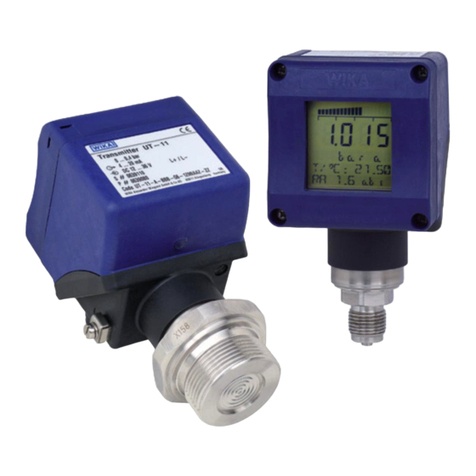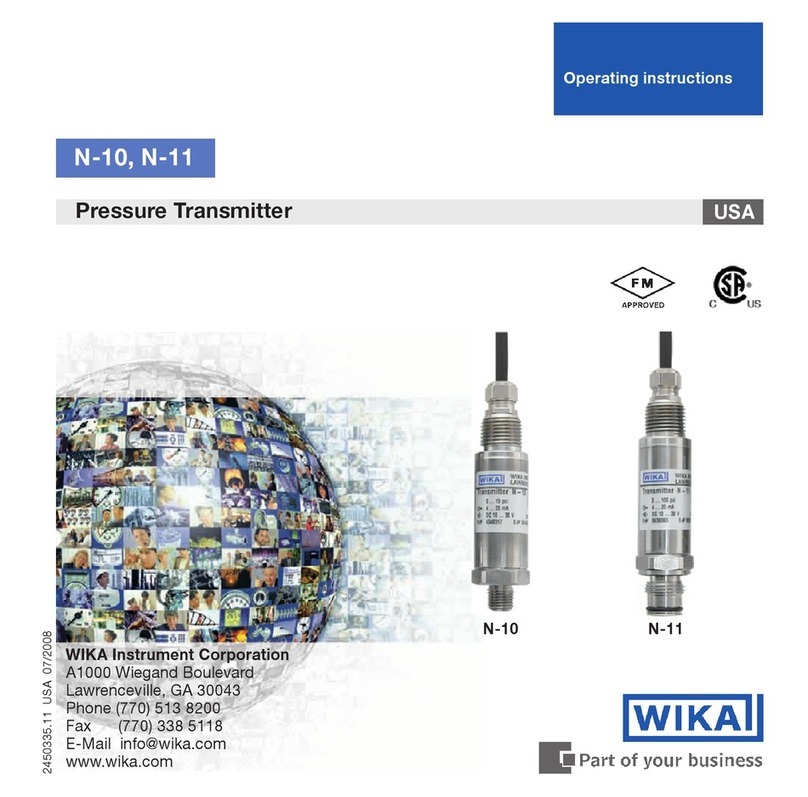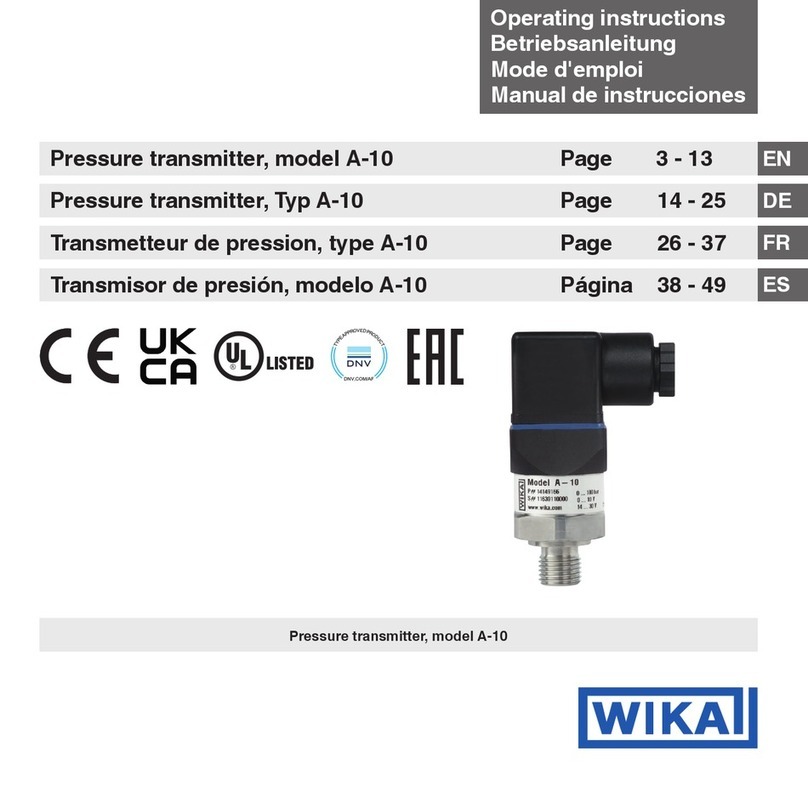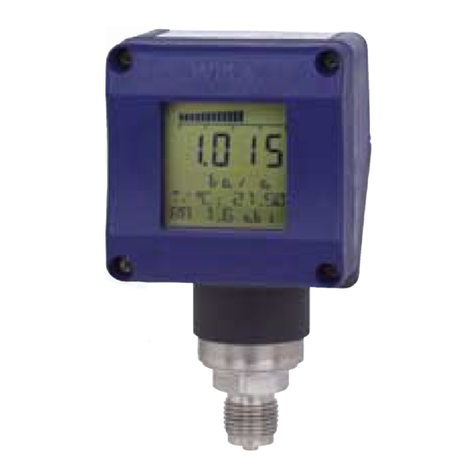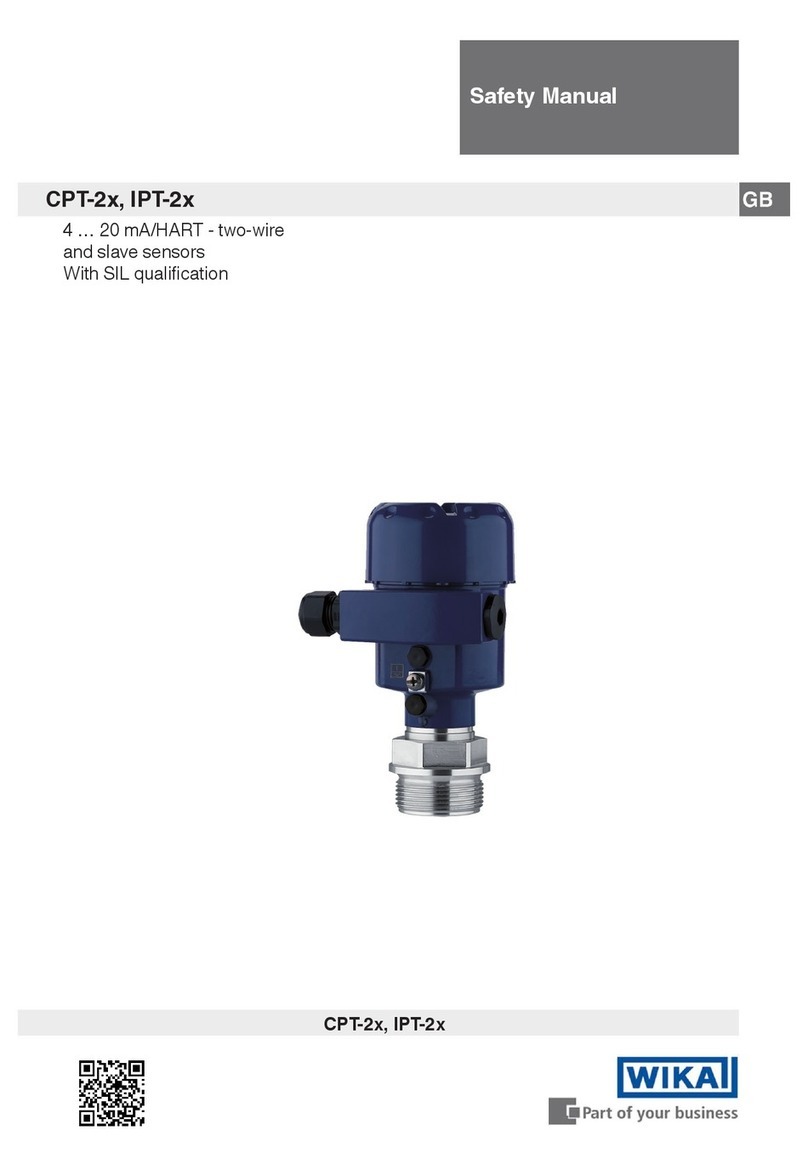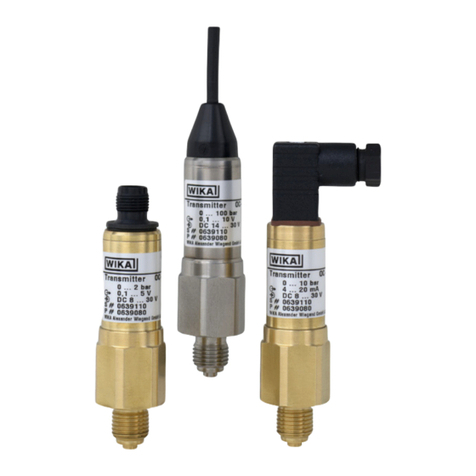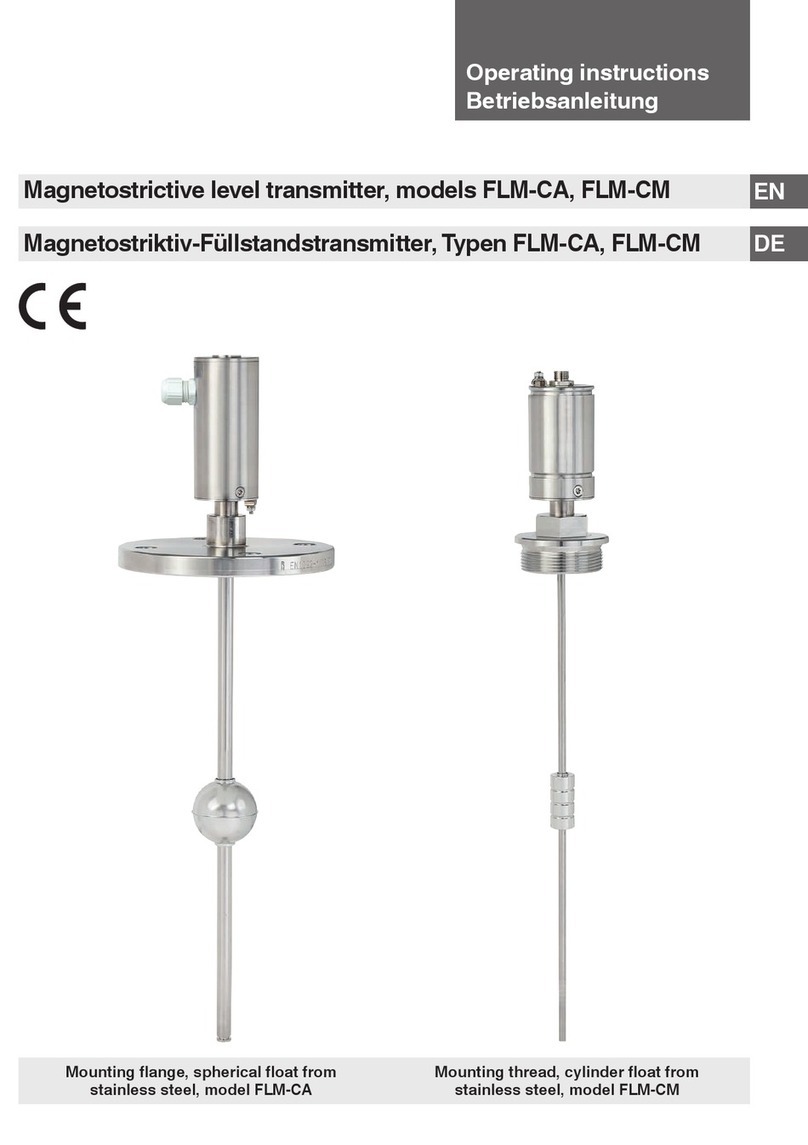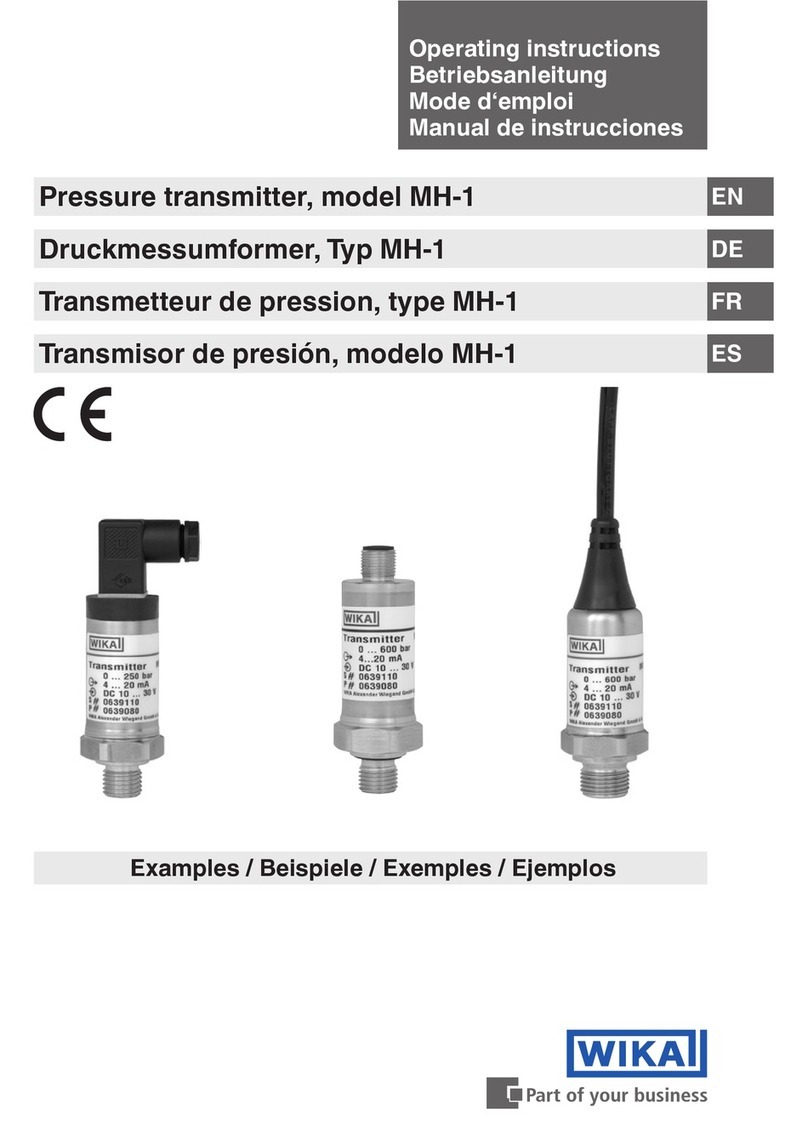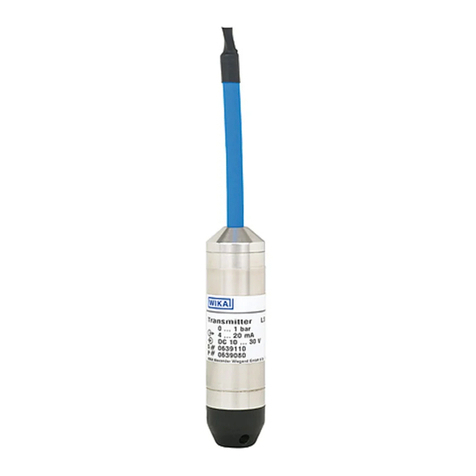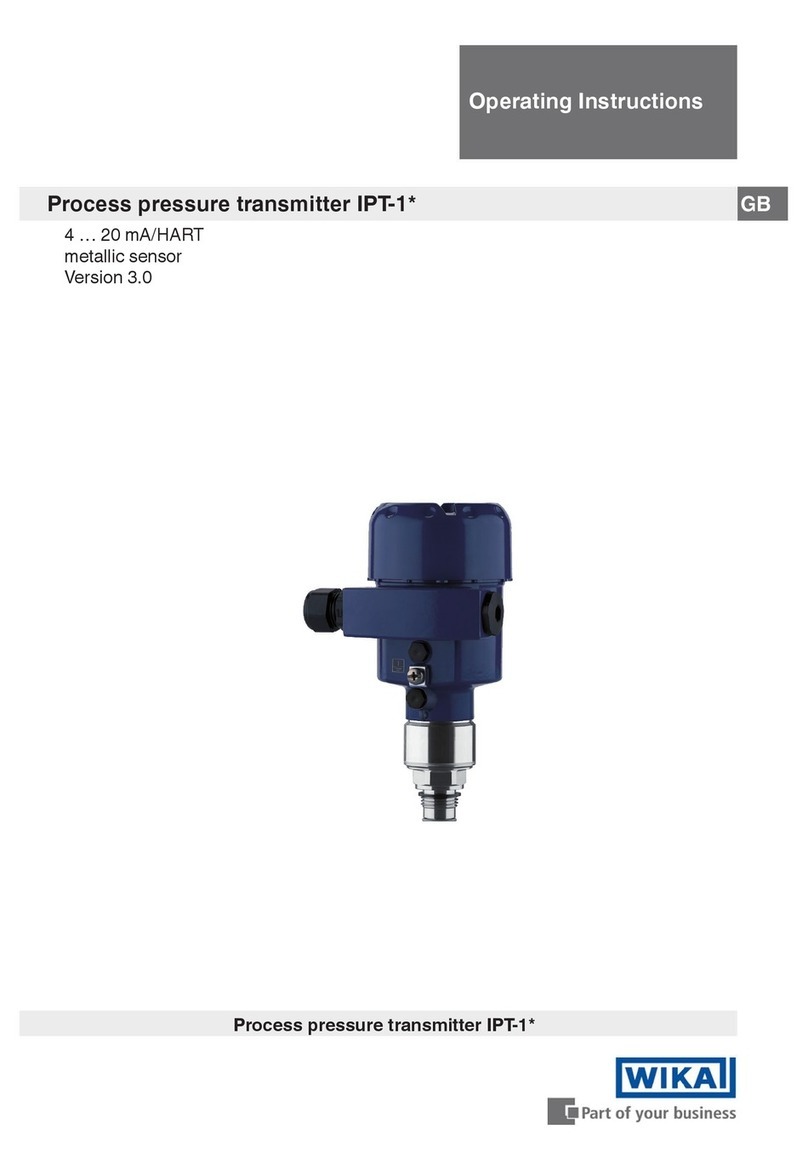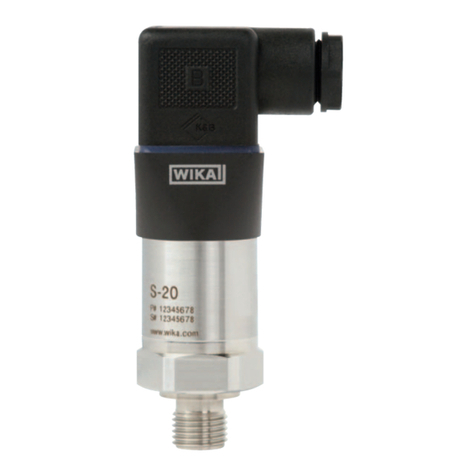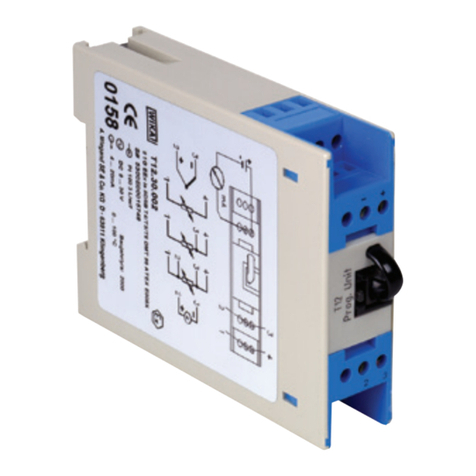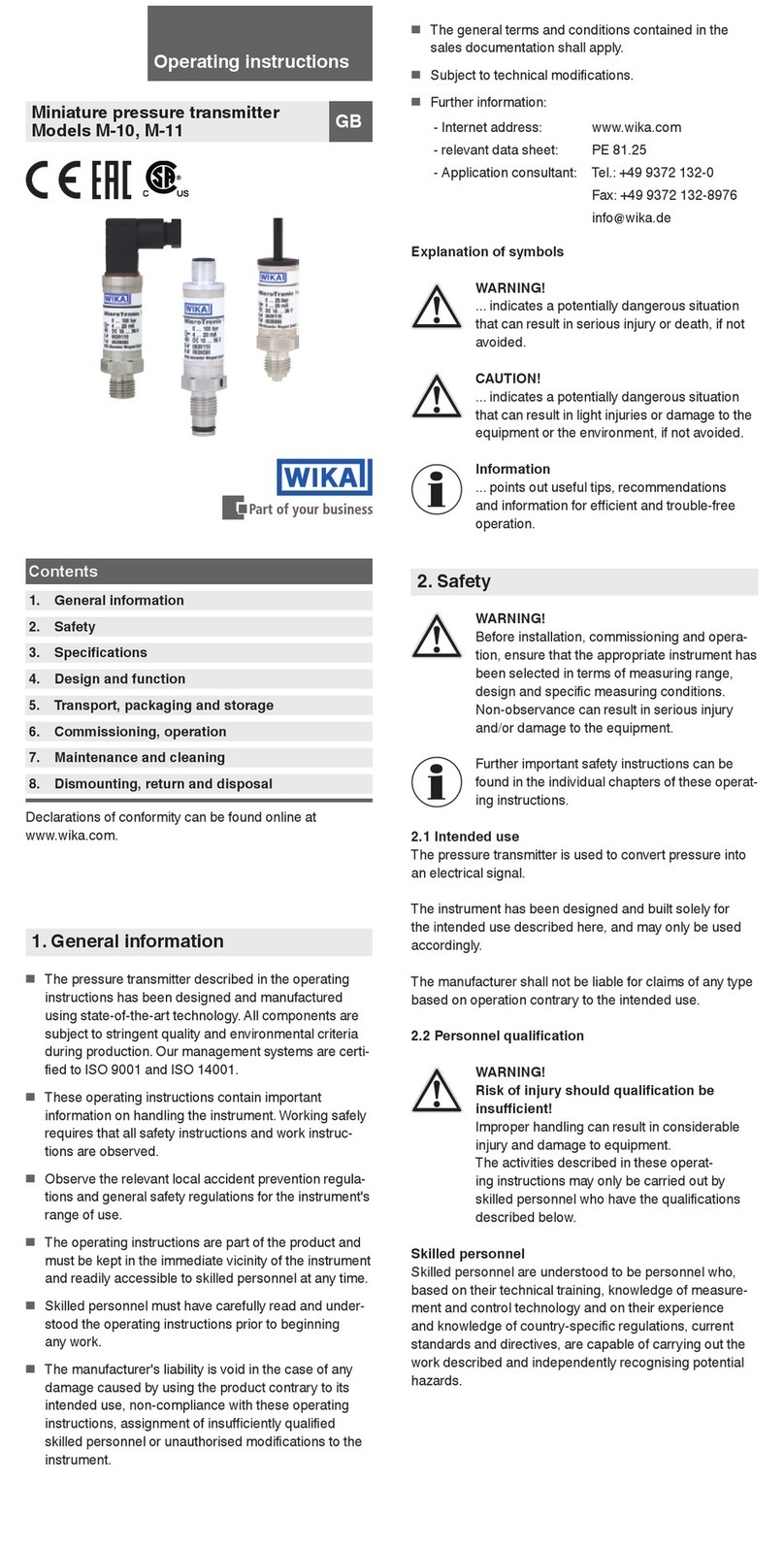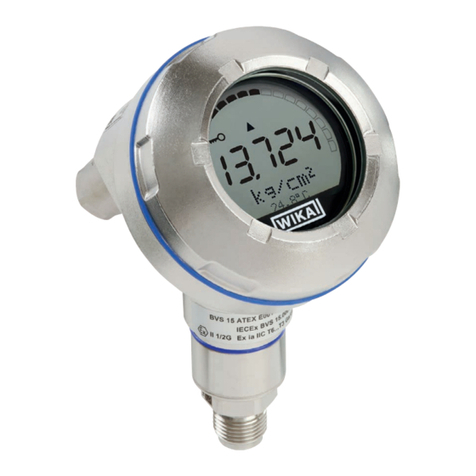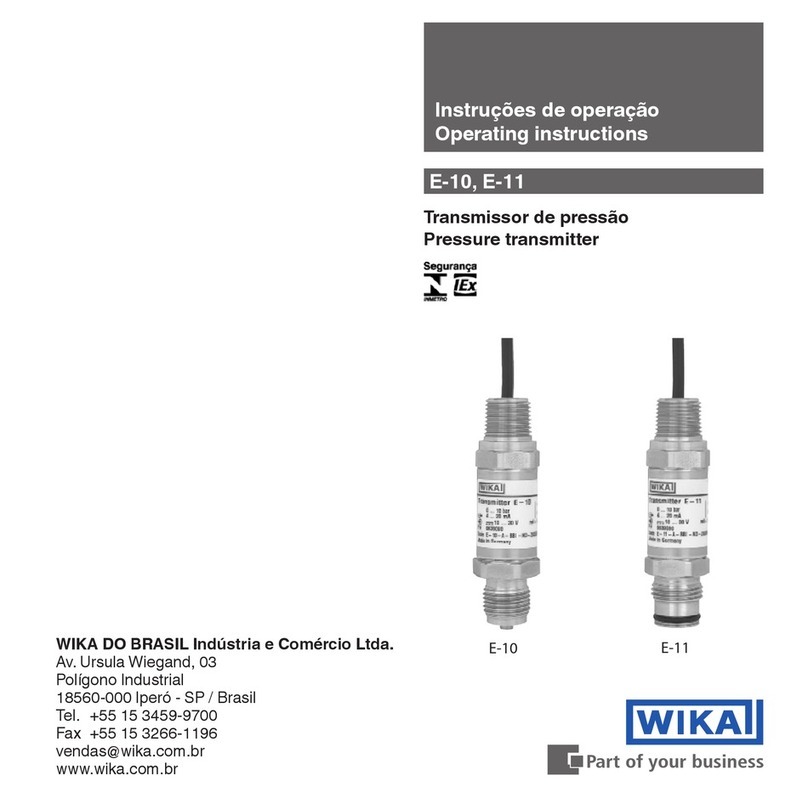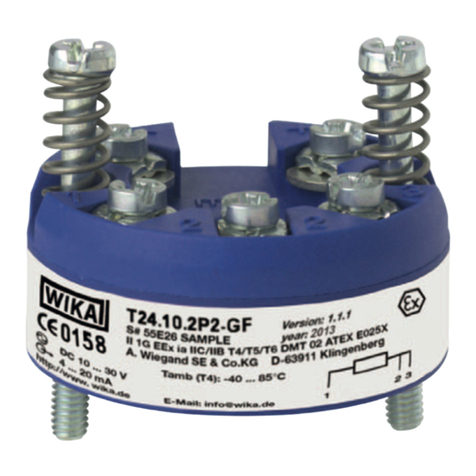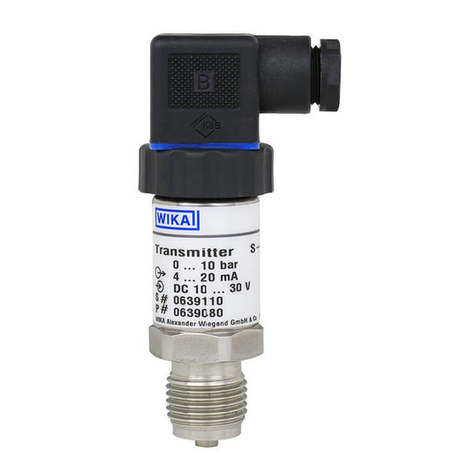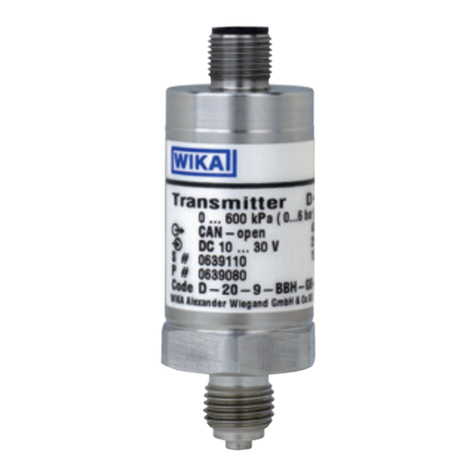
4WIKA operating instructions, model DMSU22SA
EN
14437648.01 09/2023 EN/DE
8. Configuration via display and operating unit 28
8.1 Configuring pressure measurement . . . . . . . . . . . . . . . . . 28
8.2 Setting the units . . . . . . . . . . . . . . . . . . . . . . . . 29
8.2.1 Setting the pressure unit .............................................29
8.2.2 Setting the temperature unit ..........................................29
8.3 Scaling the measuring range . . . . . . . . . . . . . . . . . . . . 29
8.3.1 Performing a wet adjustment .........................................29
8.3.2 Performing a dry adjustment..........................................30
8.4 Setting the mode . . . . . . . . . . . . . . . . . . . . . . . . 31
8.5 Mounting correction (offset) . . . . . . . . . . . . . . . . . . . . 32
8.5.1 Performing a wet adjustment .........................................32
8.5.2 Performing a dry adjustment..........................................33
8.6 Setting the damping . . . . . . . . . . . . . . . . . . . . . . . 33
8.7 Write protection . . . . . . . . . . . . . . . . . . . . . . . . 34
8.8 Activating/deactivating the write protection . . . . . . . . . . . . . . . 34
8.9 Changing the PIN. . . . . . . . . . . . . . . . . . . . . . . . 34
9. Diagnostic functions 35
9.1 Performing a pressure simulation . . . . . . . . . . . . . . . . . . 35
9.2 Performing a current simulation . . . . . . . . . . . . . . . . . . . 35
9.3 Displaying/resetting drag pointer . . . . . . . . . . . . . . . . . . 36
9.3.1 Drag pointer Pmin/Pmax...........................................................36
9.3.2 Drag pointer PVmin/PVmax........................................................37
9.3.3 Drag pointer Tmin/Tmax . . . . . . . . . . . . . . . . . . . . . . . . . . . . . . . . . . . . . . . . . . . . . . . . . . . . . . . . . . . 37
9.4 Displaying/resetting operating time . . . . . . . . . . . . . . . . . . 37
10. Detailed settings 38
10.1 Setting the language. . . . . . . . . . . . . . . . . . . . . . . 38
10.2 Marking the measuring location (TAG). . . . . . . . . . . . . . . . . 38
10.2.1 Setting the TAG short................................................38
10.2.2 Setting the TAG long ................................................39
10.3 Setting the alarm signal. . . . . . . . . . . . . . . . . . . . . . 39
10.4 Setting the signal limits . . . . . . . . . . . . . . . . . . . . . . 39
10.5 Setting the contrast of the LC display . . . . . . . . . . . . . . . . . 40
10.6 Restoring factory setting . . . . . . . . . . . . . . . . . . . . . 40
10.7 Setting the HARTcommunication. . . . . . . . . . . . . . . . . . 41
10.7.1 Setting the short address (multidrop mode) .............................41
10.7.2 Activating/deactivating constant current ................................ 41
10.8 Alarm status of diaphragm monitoring . . . . . . . . . . . . . . . . . 42
10.8.1 Alarm message at the display and operating unit .........................42
10.8.2 Alarm signal via HARTcommunication................................43
10.8.3 Alarm signal via current loop.......................................... 43
11. Instrument information 43
11.1 Displaying measuring range . . . . . . . . . . . . . . . . . . . . 43
11.2 Displaying date of manufacture . . . . . . . . . . . . . . . . . . . 44
11.3 Displaying firmware version . . . . . . . . . . . . . . . . . . . . 44
11.4 Displaying serial number . . . . . . . . . . . . . . . . . . . . . 44
Contents






